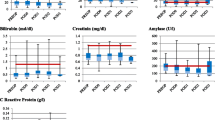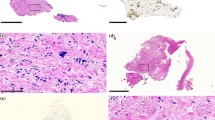Abstract
Pressurized intraperitoneal aerosol chemotherapy (PIPAC) is a new approach to deliver intraperitoneal chemotherapy as a pressurized aerosol in patients with advanced peritoneal metastases (PM). Although this treatment has rapidly been adopted into clinical practice, most surgeons are not familiar with the basics and principles of this technology. The purpose of this article is to review patient selection criteria, as well as highlighting important operative and technical details regarding PIPAC technology with a focus on “how to do it.” To this end, safety and feasibility data from a series of 1200 consecutive PIPAC procedures performed by two pioneers of PIPAC treatment are presented.



Similar content being viewed by others
References
Solass W, Kerb R, Mürdter T, Giger-Pabst U, Strumberg D, Tempfer C, Zieren J, Schwab M, Reymond MA. Intraperitoneal chemotherapy of peritoneal carcinomatosis using pressurized aerosol as an alternative to liquid solution: first evidence for efficacy. Ann Surg Oncol. 2014 Feb;21(2):553–9. https://doi.org/10.1245/s10434-013-3213-1.
Demtröder C, Solass W, Zieren J, Strumberg D, Giger-Pabst U, Reymond MA. Pressurized intraperitoneal aerosol chemotherapy with oxaliplatin in colorectal peritoneal metastasis. Colorectal Dis. 2016 Apr;18(4):364–71. https://doi.org/10.1111/codi.13130.
Robella M, Vaira M, De Simone M. Safety and feasibility of pressurized intraperitoneal aerosol chemotherapy (PIPAC) associated with systemic chemotherapy: an innovative approach to treat peritoneal carcinomatosis. World J Surg Oncol. 2016 Apr 29;14:128. https://doi.org/10.1186/s12957-016-0892-7.
Tempfer C, Giger-Pabst U, Hilal Z, Dogan A, Rezniczek GA. Pressurized intraperitoneal aerosol chemotherapy (PIPAC) for peritoneal carcinomatosis: systematic review of clinical and experimental evidence with special emphasis on ovarian cancer. Arch Gynecol Obstet. 2018 Jun 4. https://doi.org/10.1007/s00404-018-4784-7.
Göhler D, Khosrawipour V, Khosrawipour T, Diaz-Carballo D, Falkenstein TA, Zieren J, Stintz M, Giger-Pabst U. Technical description of the microinjection pump (MIP®) and granulometric characterization of the aerosol applied for pressurized intraperitoneal aerosol chemotherapy (PIPAC). Surg Endosc. 2017 Apr;31(4):1778–1784. https://doi.org/10.1007/s00464-016-5174-5.
Khosrawipour V, Khosrawipour T, Falkenstein TA, Diaz-Carballo D, Förster E, Osma A, Adamietz IA, Zieren J, Fakhrian K. Evaluating the effect of Micropump® position, internal pressure and doxorubicin dosage on efficacy of pressurized intra-peritoneal aerosol chemotherapy (PIPAC) in an ex vivo model. Anticancer Res. 2016 Sep;36(9):4595–600.
Solass W, Giger-Pabst U, Zieren J, Reymond MA. Pressurized intraperitoneal aerosol chemotherapy (PIPAC): occupational health and safety aspects. Ann Surg Oncol. 2013 Oct;20(11):3504–11. https://doi.org/10.1245/s10434-013-3039-x.Epub
Jacquet P, Sugarbaker PH. Current methodologies for clinical assessment of patients with peritoneal carcinomatosis. J Exp Clin Cancer Res 1996;15: 49–58.
Dworak O, Keilholz L, Hoffmann A. Pathological features of rectal cancer after preoperative radiochemotherapy. Int J Colorectal Dis. 1997;12(1):19–23
Author information
Authors and Affiliations
Contributions
UGP: PIPAC procedures, data collection, data analysis, drafting, and critical revision for important intellectual content of the manuscript.
CBT: PIPAC procedures and critical revision for important intellectual content of the manuscript.
Corresponding author
Rights and permissions
About this article
Cite this article
Giger-Pabst, U., Tempfer, C.B. How to Perform Safe and Technically Optimized Pressurized Intraperitoneal Aerosol Chemotherapy (PIPAC): Experience After a Consecutive Series of 1200 Procedures. J Gastrointest Surg 22, 2187–2193 (2018). https://doi.org/10.1007/s11605-018-3916-5
Received:
Accepted:
Published:
Issue Date:
DOI: https://doi.org/10.1007/s11605-018-3916-5




